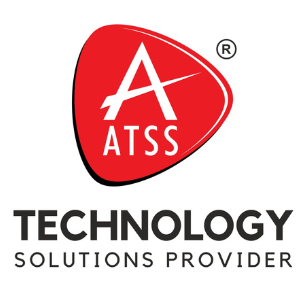What is CCTV?
CCTV is an acronym for Closed Circuit Television . ” Closed circuit ” as in, an installation of directly connected components creating a circuit which cannot be viewed by anybody outside of the circuit.
This is different to a terrestrial television broadcast system which can be viewed by anybody with an arial/antenna or other reception equipment .
CCTV systems are customised to suit the nature of the premises and the security needs of the customer.
The ideal CCTV system should provide excellent quality pictures in both daylight and darkness, be easy and flexible to use and provide high quality images for recording evidence or to help analyse an event.
How Does CCTV Work?
There are many different types of CCTV systems available—analog and digital, wired and wireless—and their modes of operation vary; however, the basic components are in essence the same: a CCTV camera, a CCTV camera lens, a CCTV monitor, and (for wired systems) cables that carry the signal from one place to another.
The images collected are sent to a CCTV monitor and recorded on video tape via a VCR or as digital information via a DVR (Digital Video Recorder). The CCTV camera lens will determine how far and much detail the CCTV camera can see.
The CCTV camera picks up the signal from the area being monitored, and in a wired system, the CCTV camera sends the signals through a coaxial cable to the CCTV monitor; in wireless systems, no cable is needed, instead the CCTV camera broadcasts the signal. Monitors can be watched by CCTV controllers or left unmonitored.
Recent advances in technology and software mean many DVRs are now equipped with advanced features such as Motion Recording and Event Notification. When set to motion record devices will only record when the CCTV camera detects motion. This saves storage space because the device is not recording during periods of inactivity. Event Notification is the process of sending a text message, recorded telephone messages or email when motion is detected.
This is particularly useful for unmanned systems. The recorded information can be stored and/or reviewed by those who have access to the recordings at their convenience. Many of the latest DVRs also have network connections so that saved and live footage can be accessed remotely via a PC over the internet.
A Multi Camera CCTV System?
Most systems today comprise of more than one camera , but you don’t need a monitor and recorder for each camera ; several cameras can share one monitor and hard disc recorder .
Equipment is available that will split the monitor into four separate screens displaying four cameras , or a four way sequence unit can be used which allows you to choose which camera you would like to view. Alternatively, the automatic mode it will sequence through the four cameras that are connected.
However, the most common way of controlling multiple cameras is via a multiplexer .
To keep it simple, a multiplexer incorporates the above facilities but also has the ability to individually code mark each image from each camera and because of this, a multiplexer allows all of the cameras on a system to be recorded onto one tape or hard drive unit. The multiplexer then uses these code marks to play back the recorded picture from the camera that you wish to view.
Historically multiplexers and recording units were separate pieces of equipment, but over recent years manufacturers have developed units that do both jobs.
Who needs a CCTV Surveillance System?
CCTV systems can be found virtually everywhere these days.
You will have seen CCTV surveillance systems operating in town centres, football stadiums, high street shops, sports centres, petrol stations, on roads and public transport – the list is endless. And CCTV is becoming increasingly more common in a domestic situation.
CCTV systems are no longer considered an expensive luxury item, especially when you consider the increased level of security they provide.
In the commercial (business) sector, they can be used for Health and Safety purposes, so that members of the general public can prove that an incident happened or, on the other hand, for employees to fight against fraudulent claims. It also provides security/crime prevention .
What ever you want – what ever you need…
These days, a CCTV system can be designed to fit any scenario you care to imagine, using options from the vast range of equipment available from manufactures worldwide.
For example, cameras can be internal or external , highly visible or covert . They can be static or fully controllable/movable from a remote location. You can have one camera or hundreds; you can record for one day or weeks. With a suitable internet connection, you can even view your property when you are abroad.
Why Should I Buy A Quality CCTV System?
In around 70% of all cases, CCTV footage is found to be inadmissible as evidence in a Court of Law because the quality of the evidence is considered inadequate. This can result from the poor design and bad installation of the system and highlights the importance to seek professional advice from the outset.
You should only approach a company who can demonstrate their professionalism and experience in design and installation of CCTV systems . Most importantly, you must feel confident that the company you choose will listen to and understand your individual CCTV requirements. Their experience with lens optics and camera technology will guarantee you satisfaction with your system.
A specialist company will also ensure the best value for money by using a different lens or camera mounting positions, for example, which can not only monitor the area at risk but also give an outline view of the surrounding area at the same time.
